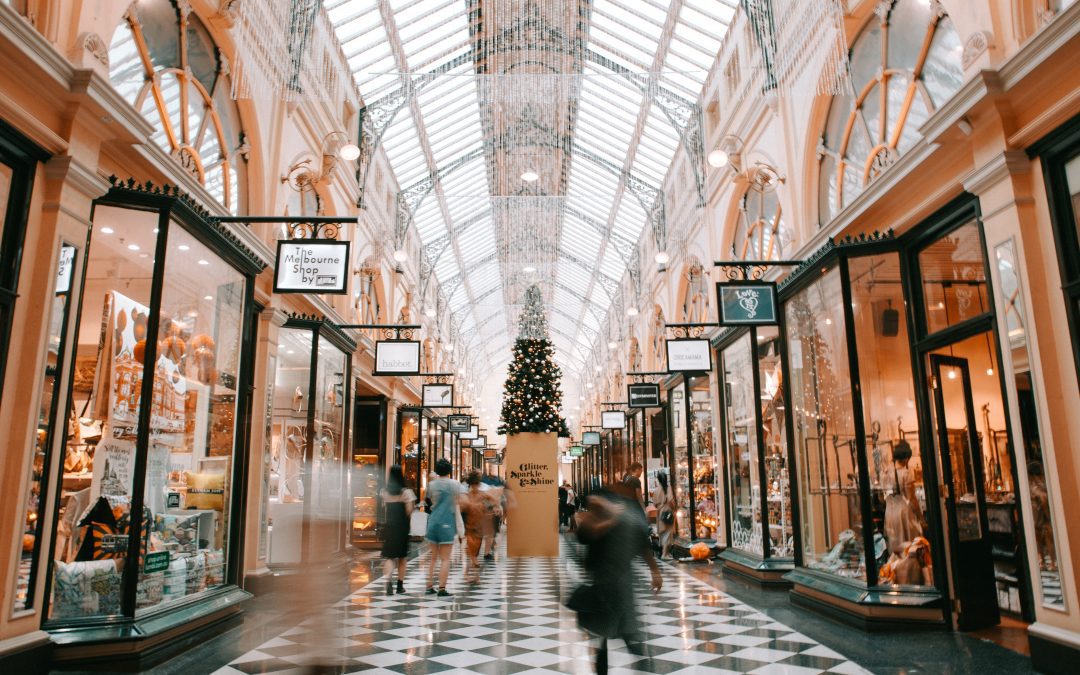Welcome to our comprehensive guide showcasing the top 100 selling spices that add flavor and depth to dishes worldwide. In this curated list, we’ve compiled an array of spices celebrated for their aromatic profiles, culinary versatility, and cultural significance. From the robust warmth of cinnamon to the fiery kick of chili powder, each spice on this list brings its unique essence to the table, elevating gastronomic experiences across diverse cuisines.
Embark on a sensory journey as we unveil the essential spices that have secured their place in kitchens globally. Whether you’re an aspiring home cook or a seasoned chef, this compilation serves as a compass through the world of flavors, offering insights into the uses, origins, and distinctive characteristics of each spice. Discover how these aromatic treasures enliven dishes, unlock tantalizing tastes, and contribute to the rich tapestry of culinary traditions worldwide.
List of The Most Popular Spices in The World
1. Pepper (Black, White, Red): Varies in color and flavor; black is pungent, white is milder, red offers heat.
2. Cinnamon: Sweet and warming spice used in both savory and sweet dishes.
3. Cumin: Earthy and aromatic, a staple in various cuisines worldwide.
4. Paprika: Adds color and mild flavor; ranges from sweet to hot varieties.
5. Chili Powder: Blend of spices, often including chili peppers, cumin, and garlic, lending heat to dishes.
6. Garlic Powder: Conveniently adds garlic flavor to dishes without the need for fresh garlic.
7. Ginger: Spicy and aromatic, adds depth to both sweet and savory dishes.
8. Turmeric: Known for its vibrant color and earthy, slightly bitter taste.
9. Nutmeg: Warm and nutty spice used in sweet and savory recipes.
10. Coriander: Citrusy and slightly sweet, both the seeds and leaves are used in cooking.
11. Cloves: Intensely aromatic spice with a strong, sweet flavor.
12. Cardamom: Has a unique, fragrant, and slightly sweet taste; often used in desserts.
13. Mustard Seeds: Add a pungent, slightly bitter flavor to dishes when crushed or cooked.
14. Fennel Seeds: Offers a mild anise-like flavor, commonly used in both savory and sweet dishes.
15. Oregano: Herb with a robust, peppery flavor, popular in Mediterranean cuisine.
16. Thyme: Earthy, slightly minty herb often used in soups, stews, and sauces.
17. Rosemary: Woody, aromatic herb that complements a variety of dishes, especially meats.
18. Basil: Sweet and aromatic herb, a key ingredient in Italian cuisine.
19. Bay Leaves: Imparts a subtle, herbal flavor when used in cooking; often used in soups and stews.
20. Saffron: Adds a distinctive golden color and floral flavor to dishes, but it’s quite expensive.
21. Allspice: Warm, reminiscent of a blend of cinnamon, cloves, and nutmeg.
22. Smoked Paprika: Paprika smoked for added depth and flavor, ranging from mild to hot.
23. Cayenne Pepper: Known for its heat, used sparingly to add spiciness to dishes.
24. Taco Seasoning Blend: Mixture of spices like chili powder, cumin, paprika, and others for Mexican-inspired dishes.
25. Curry Powder: A blend of spices that varies but commonly includes turmeric, cumin, coriander, and more, used in curries and other dishes.
26. Vanilla Beans: Adds sweet, floral flavor; prized for desserts and aromatics.
27. Parsley: Versatile herb with a fresh, slightly peppery taste, used as a garnish and in cooking.
28. Sage: Earthy, savory herb, often used in stuffing and with meats.
29. Marjoram: Delicate herb with a mild, sweet flavor, commonly used in Mediterranean dishes.
30. Chives: Mild onion flavor, great for garnish or in salads and sauces.
31. Celery Seed: Adds a bitter, earthy taste reminiscent of celery to dishes.
32. Tarragon: Herb with a distinctive anise-like flavor, used in French cuisine.
33. Dill: Fresh, tangy herb used in pickling, seafood, and dips.
34. Chili Flakes: Adds heat and flavor, a staple in many cuisines worldwide.
35. Fenugreek: Nutty, slightly sweet flavor often used in Indian and Middle Eastern dishes.
36. Caraway Seeds: Earthy, anise-like taste, commonly used in bread and sauerkraut.
37. Anise: Sweet, licorice-like flavor, often used in baking and spirits.
38. Asafoetida (Hing): Pungent, savory spice used as a flavor enhancer, especially in Indian cuisine.
39. Juniper Berries: Contribute a piney, slightly citrusy flavor, used in gin and some meat dishes.
40. Turmeric: Vibrant yellow spice with an earthy, slightly bitter taste.
41. Mace: Similar to nutmeg but slightly milder, used in both sweet and savory dishes.
42. Sumac: Tangy, lemony flavor used to add acidity and brightness to dishes.
43. Za’atar: Middle Eastern spice blend with thyme, sesame seeds, sumac, and other herbs.
44. Sichuan Peppercorns: Provide a tingling, numbing sensation along with citrusy flavor.
45. Herbes de Provence: Blend of aromatic herbs commonly used in French cooking.
46. Harissa: Spicy paste made from chili peppers, garlic, and spices, used in North African cuisine.
47. Ras el Hanout: Moroccan spice blend with a complex mix of various spices.
48. Berbere: Ethiopian spice blend known for its heat and rich flavors.
49. Adobo Seasoning: Versatile Latin American spice blend used on meats, poultry, and vegetables.
50. Chinese Five Spice: Mix of star anise, cloves, Chinese cinnamon, Sichuan pepper, and fennel seeds, used in Chinese cuisine for a sweet and savory flavor profile.
51. Ajwain (Carom Seeds): Known for digestive properties, with a thyme-like flavor.
52. Tamarind: Tangy-sweet, adds depth to dishes, common in Indian and Southeast Asian cuisines.
53. Black Salt (Kala Namak): Has a sulfurous taste, used in Indian cooking for an eggy flavor.
54. Pimento (Allspice): Blend of flavors resembling cloves, cinnamon, and nutmeg.
55. Shichimi Togarashi (Japanese Seven Spice): A mix of seven spices offering heat and aroma to Japanese dishes.
56. Za’atar: Middle Eastern blend of herbs like thyme, sumac, and sesame seeds.
57. Savory: Herb with a peppery taste, often used in stuffing and soups.
58. Lovage: Resembles celery and parsley flavors, used to add depth to dishes.
59. Lavender: Floral and fragrant herb, used in both sweet and savory dishes sparingly.
60. Chamomile: Delicate, floral herb often used in teas and infusions for relaxation.
61. Szechuan Pepper: Provides a numbing, tingling sensation with citrusy notes.
62. Star Anise: Licorice-like spice, adds depth to both savory and sweet dishes.
63. Chervil: Delicate herb with flavors akin to anise and parsley, used in French cuisine.
64. Wattleseed: Nutty, roasted flavor used in Australian Indigenous cuisine.
65. Grains of Paradise: Peppery spice reminiscent of black pepper and cardamom.
66. Galangal: Aromatic root with a spicy, citrusy flavor used in Southeast Asian cuisine.
67. Cassia Bark: Similar to cinnamon, adds warmth and sweetness to dishes.
68. Sorrel: Tangy, lemony herb used in soups, salads, and sauces.
69. Epazote: Pungent herb with a unique flavor used in Mexican cooking, particularly with beans.
70. Cubeb: Peppery, slightly bitter spice, reminiscent of allspice and pepper.
71. Long Pepper: Has a complex, spicy flavor with hints of nutmeg and cinnamon.
72. Cilantro Seeds: Offer a citrusy, slightly peppery taste, commonly used in pickling.
73. Dill Seeds: Similar to dill weed but with a stronger flavor, often used in pickles and bread.
74. Angelica: Herbal, slightly bitter flavor, used in herbal liqueurs and confectionery.
75. Tansy: Bitter herb with a strong flavor, historically used in cooking and medicine but now used sparingly due to potential toxicity.
76. Kaffir Lime Leaves: Citrusy leaves used to add a distinct flavor to Southeast Asian dishes.
77. Pandan Leaves: Aromatic leaves with a nutty, vanilla-like essence, widely used in Asian desserts.
78. Cassia Buds: Floral spice with a hint of cinnamon, used in pickling and spiced drinks.
79. Culantro: Similar to cilantro but stronger in flavor, common in Latin American and Southeast Asian cuisines.
80. Black Cardamom: Smoky, robust pods used in savory dishes, especially in Indian cooking.
81. Tonka Beans: Adds a complex vanilla and almond-like flavor, but use is regulated due to coumarin content.
82. Mango Powder (Amchur): Tangy powder made from dried unripe mangoes, used as a souring agent in Indian cuisine.
83. Peri-Peri: African bird’s eye chili, known for its heat, used to make spicy sauces.
84. Grains of Selim (Negro Pepper): Aromatic spice with a smoky, earthy flavor, common in West African cuisine.
85. Wormwood: Bitter herb often used in herbal drinks and historically in absinthe.
86. Wasabi: Pungent, green Japanese horseradish used to add heat to dishes, especially with sushi.
87. Korean Red Pepper Flakes (Gochugaru): Coarse flakes of red chili peppers used in Korean cuisine for heat and flavor.
88. Kokum: Sour fruit used in Indian cooking, imparts a tangy flavor to dishes.
89. Sumbul: Aromatic herb with musky, floral notes, used in Middle Eastern cuisine.
90. Dagga: Herb with a minty, slightly bitter taste, used in South African dishes.
91. Golpar: Persian hogweed seeds with a citrusy, slightly bitter taste, used as a spice.
92. Silphium: Extinct herb used in ancient Mediterranean cuisine, believed to have had a unique flavor.
93. Cuban Oregano: Herb with a strong oregano-like flavor, used in Caribbean and Latin American cuisines.
94. Sassafras: Provides a unique, root beer-like flavor, especially in Creole and Cajun cuisines.
95. Colombo Powder: Caribbean spice blend with flavors resembling curry powder.
96. Culantro: (Repeated from the list) Similar to cilantro but stronger in flavor, common in Latin American and Southeast Asian cuisines.
97. Cochineal: Red dye derived from insects, used as a natural coloring agent in food and beverages.
98. Zedoary: Relative of ginger with a bitter, citrusy flavor, used in Asian cuisines.
99. Wild Thyme: Herb with a strong, earthy flavor, common in Mediterranean dishes.
100. Kawakawa: Native New Zealand herb with a peppery flavor, used in Maori cuisine.
Other Important Spices
- Peppermint
- Spearmint: used for mint tea
- Lemon balm
- Lemon grass
- Lemon verbena
- Szechuan buttons
- Licorice
- Onion powder
- Celery salt
- Poppy seed
- Mustard powder
- Rue (Ruta graveolens)
Methodology used to compile this list
The methodology employed in crafting the list of the 100 best-selling spices worldwide entailed meticulous analysis and consolidation of sales data gathered from esteemed platforms such as Statista. BusinessNES conducted exhaustive research, utilizing prevalent market trends and industry insights to guarantee the precision and dependability of the eventual compilation.
Other Popular Seasonings & Flavor Enhancers
- Salt
- White sugar
- Brown sugar
- Black truffle salt
- Onion
- Garlic
- Sesame
- Vinegar
- Soy Sauce
- Worcestershire Sauce
- Liquid Smoke
- BBQ Sauce
- Honey
- Maple Syrup
- Fish Sauce
- Tamarind Paste
- Miso Paste
- Coconut Aminos
Why Are Spices Important?
Herbs and spices are the unsung heroes that have transformed culinary landscapes throughout history. Their significance surpasses mere taste enhancement; they are the alchemists of flavor, the artists of aroma, and the preservers of tradition.
From ancient civilizations to modern gastronomy, herbs and spices have woven themselves into the very fabric of human culture. Their importance transcends borders, religions, and time, serving as cultural ambassadors that bridge gaps and create connections between people and their heritage.
These botanical treasures aren’t just about adding a kick to a dish; they possess remarkable medicinal properties and have been revered for their healing abilities across diverse civilizations. Their value extends beyond the culinary realm into holistic health practices, enriching both body and soul.
In the world of business, herbs and spices wield immense economic power. They have been coveted commodities that fueled global trade routes, sparked exploration, and influenced geopolitical landscapes. Their commercial significance is undeniable, with some spices having been more valuable than gold at certain points in history.
But beyond their economic and medicinal roles, herbs and spices are storytellers. Each one carries a narrative of its origin, a tale of discovery, conquest, or cultural exchange. They invite us on a sensory journey, evoking memories and emotions, and infusing dishes with a sense of nostalgia and adventure.
Their role in the culinary realm cannot be overstated. Herbs and spices are the cornerstone of gastronomic creativity, empowering chefs and home cooks alike to experiment, innovate, and create culinary masterpieces that tantalize taste buds and elevate dining experiences.
In essence, herbs and spices are not just ingredients; they are living legacies that continue to enrich our lives, connecting us to our past while continually inspiring our present and future endeavors. Their importance in the world transcends the confines of the kitchen; they are cultural treasures that enrich our existence in ways both tangible and profound.
Recommended Articles

TOP 40 Fire-Related Business Ideas to Start in 2024
When we think about fire, it's often about its dangers or the essential role it plays in our daily lives, from cooking to keeping us warm. Yet,...

Is Apple About to Face Tough Times?
Apple, a paragon of innovation and a titan in the tech industry, stands at a critical crossroad. The fiscal year of 2023 unveiled a stark reality:...

Top 30 Business Ideas Near Highway & Guide
If you're considering starting a business near a highway and are on the hunt for the most profitable ventures, you've come to the right place....

TOP 25 Catering Business Ideas for 2024
If you're looking to start a business in the food industry, exploring catering business ideas for 2024 might be the perfect path for you. The catering world offers a wide range of opportunities, from small, intimate gatherings to large-scale events, allowing for...

30 Types of Clothing Stores – Shop Definitions & Examples
In this article, we have compiled a list of the 30 most common types of clothing stores. At first glance, it might seem that a clothing store is simply a place where clothes are sold, suggesting that there wouldn't be many variations among them. However, the reality...
Most Read
TOP 100 Luxury Services List
In this article we gathered 100 of the most luxurious services available in the world, providing a glimpse into the opulent lifestyles of the ultra-wealthy. Whether you're looking to indulge in a world-class spa treatment or take a private helicopter tour of a remote...

TOP 50 Easy Food to Sell – Most Profitable Ideas
In this article, we've curated a list of the top 50 easy food ideas for sale, ideal for concession stands, restaurants, bars, small home businesses, and various other venues. These foods are simple to prepare, and their sale isn't overly challenging. Undoubtedly, all...
Top 100 Products in High Demand to Sell in 2024
Welcome to the ultimate guide to the top 100 products in high demand for 2024! In a rapidly evolving marketplace, staying ahead of consumer trends is pivotal for entrepreneurs and businesses. Understanding the products that will captivate the market's attention is...
TOP 20 Best Bakery Types to Open in 2024
In 2024, the bakery industry is set to evolve, blending traditional flavors with innovative concepts to meet the ever-changing tastes of consumers. As we navigate through this delicious transformation, aspiring entrepreneurs are presented with an array of bakery...
